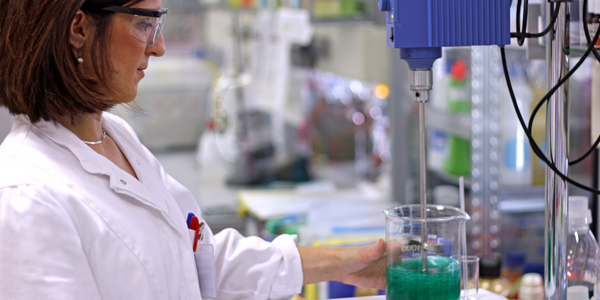Technology Category
- Sensors - Chemical Sensors
Applicable Industries
- Chemicals
- Education
Applicable Functions
- Sales & Marketing
Use Cases
- Onsite Human Safety Management
- Time Sensitive Networking
Services
- System Integration
- Training
About The Customer
Good Nature Organic Lawn Care is a US-based company that has been in business for 21 years. The company provides lawn care services using purely organic ingredients, offering a safer alternative to traditional pesticides that contain harmful chemicals. The company prides itself on nurturing soil and thickening grass without using chemical insecticides, fungicides, and weed killers. With 40 full-time employees, Good Nature Organic Lawn Care is committed to delivering great service and maintaining the trust of its clients.
The Challenge
Good Nature Organic Lawn Care, a company that provides lawn care services using non-harmful organic products, faced significant challenges in managing its business processes. The company had a manual system for documenting its processes, which quickly became obsolete as the company frequently updated its procedures to improve results. The manual was not only time-consuming to update, but it was also cumbersome for employees to use, leading to inefficiencies and errors. The company needed a more effective way to document and communicate its processes to ensure strict adherence to safety guidelines and maintain the trust of its clients.
The Solution
The company decided to adopt SweetProcess, a workflow management system, to streamline its business processes. SweetProcess allowed the company to easily update its processes without having to discard the entire manual and start from scratch. It also simplified the employee onboarding process, making training more efficient and less time-consuming. Additionally, SweetProcess enabled the company to standardize its operations across the board, ensuring uniformity and consistency in its services. The company also used the system to improve its processes by asking employees to write down how they executed tasks and adopting the most effective methods as the standard.
Operational Impact
Quantitative Benefit

Case Study missing?
Start adding your own!
Register with your work email and create a new case study profile for your business.
Related Case Studies.

Case Study
Honeywell - Tata Chemicals Improves Data Accessibility with OneWireless
Tata was facing data accessibility challenges in the cement plant control room tapping signals from remote process control areas and other distant locations, including the gas scrubber. Tata needed a wireless solution to extend its control network securely to remote locations that would also provide seamless communication with existing control applications.

Case Study
Advanced Elastomer Systems Upgrades Production
In order to maintain its share of the international market for thermoplastic elastomers AES recently expanded its Florida plant by adding a new production line. While the existing lines were operating satisfactorily using a PROVOX distributed control system with traditional analog I/O, AES wanted advanced technology on the new line for greater economy, efficiency, and reliability. AES officials were anxious to get this line into production to meet incoming orders, but two hurricanes slowed construction.
Case Study
Wireless GPS Tracking & Security Monitoring
Enhancing the security of hazardous freight and ensuring compliance with Homeland Security’s Transportation Security Administration mandate that all trains carrying chemicals capable of creating a toxic inhalation condition are equipped with on-board safety monitoring systems.

Case Study
Field Device Asset Management For Chemical Company in China
Chinese chemical subsidiary of multinational corporation serves customers throughout the world. Sales offices and research and technology centers are strategically located to provide rapid response to customer requests. Just two workers were assigned to maintain thousands of intelligent instruments in three production units, so they could do little more than react to device issues as they appeared. This costly maintenance method inevitably led to unexpected downtime when a critical instrument failed. Plant management recognized the need to change from reactive to predictive maintenance for all assets, including instruments and control valves, but help was needed in implementing such a technology-based initiative.

Case Study
Industrial Workforce Mobility for Improved Safety & Operations
Huntsman Corporation, a global manufacturer and marketer of differentiated chemicals, undertook an aggressive program to eliminate injuries, product defects, and environmental releases at their Port Neches facility. Termed “Project Zero”, this program required a completely mobile solution to empower operations and maintenance personnel to capture defects, track work progress and make process and safety related decisions in real-time.








